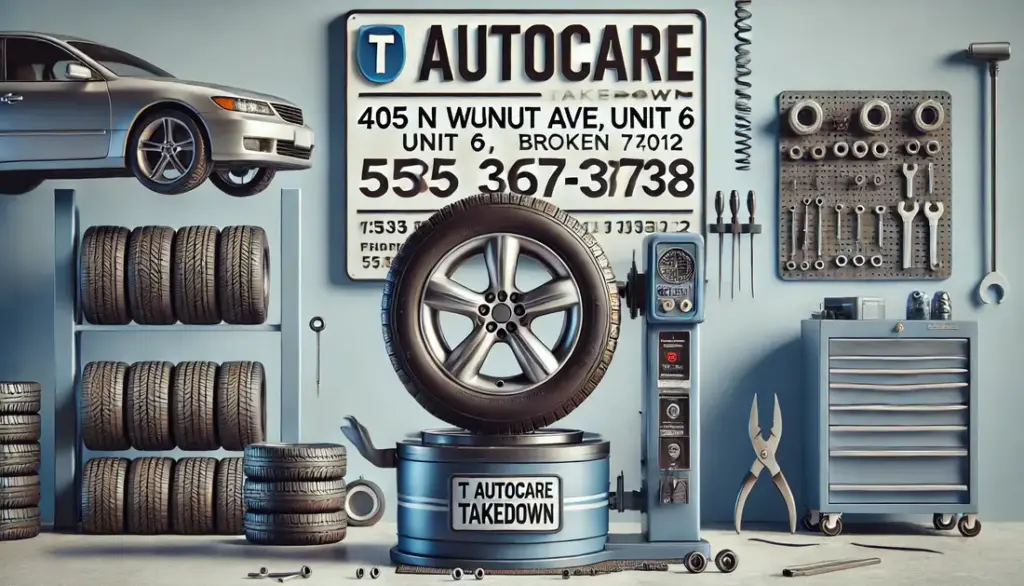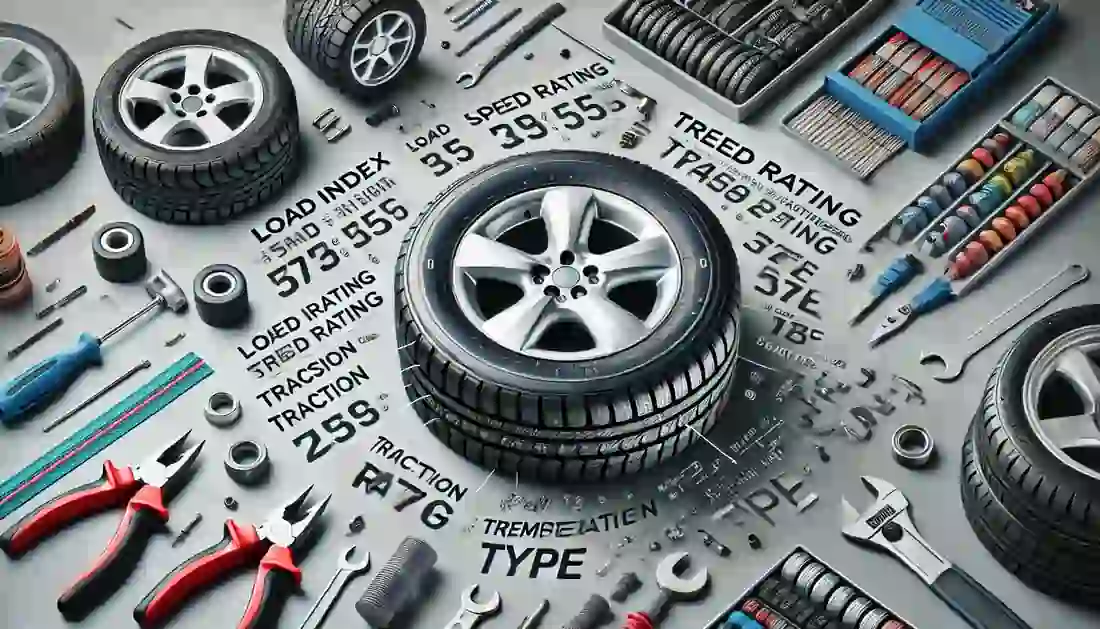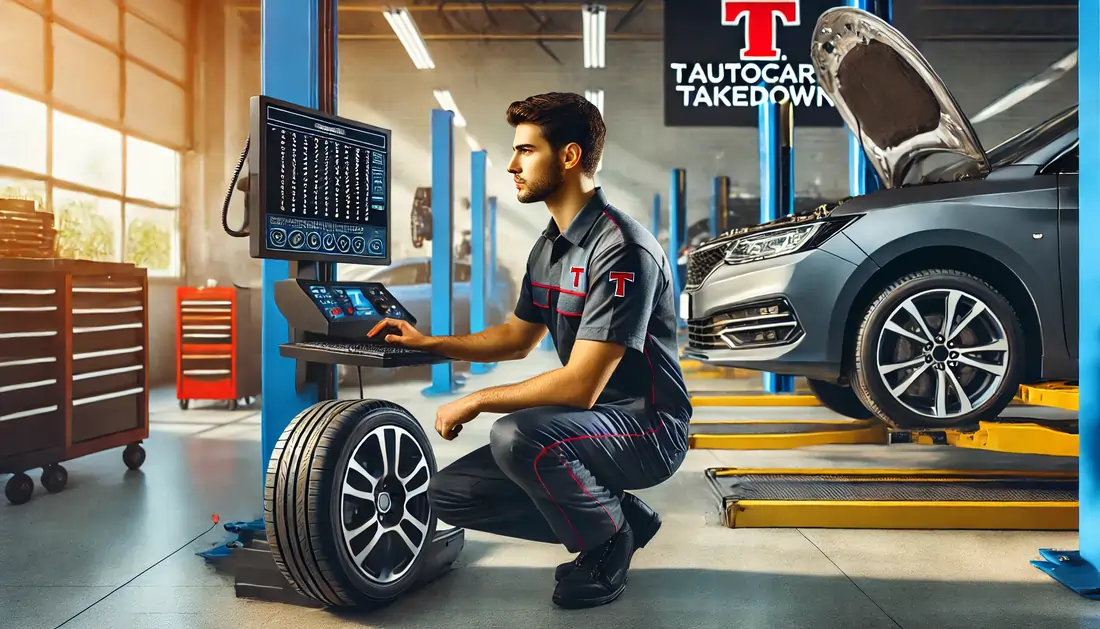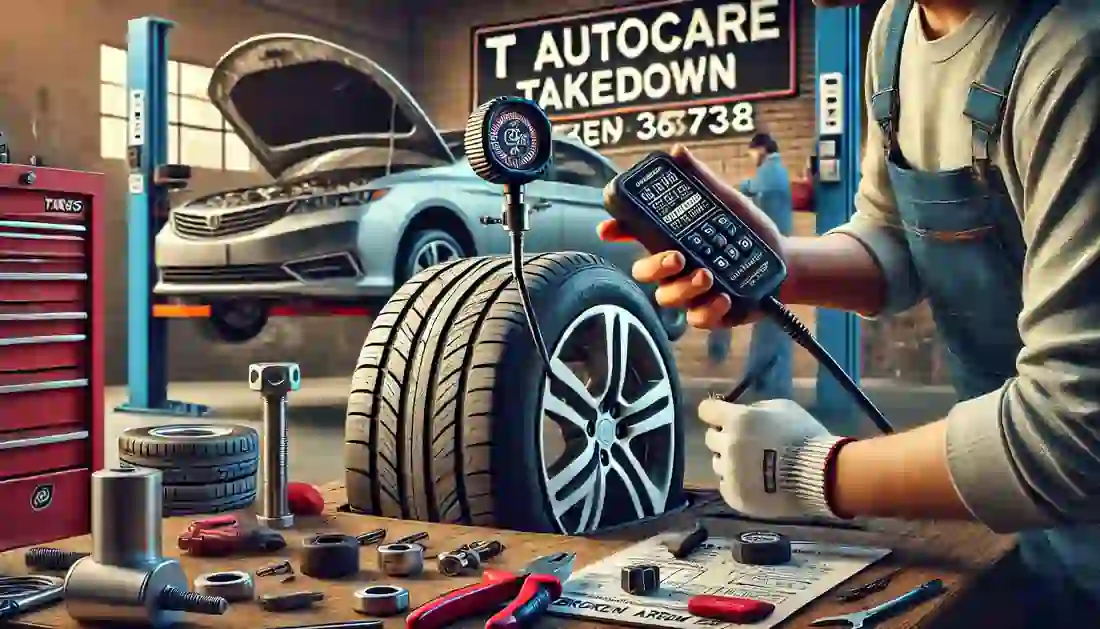Regular tire balancing is a crucial aspect of vehicle maintenance that ensures a smooth ride, extends tire life, and improves overall vehicle performance. At T Autocare Takedown, we understand the significance of maintaining properly balanced tires. Here’s a comprehensive guide on why tire balancing is essential, along with some unique insights to enhance your understanding.
Tire balancing involves distributing the weight of the tires and wheel assemblies evenly to prevent vibrations and uneven tire wear. Regular balancing is essential for maintaining the safety, efficiency, and comfort of your vehicle. Understanding the benefits and techniques of tire balancing can help you make informed decisions about your car maintenance routine.

How Does Tire Balancing Work?
Tire balancing works by ensuring that the weight of the tire and wheel assembly is evenly distributed. Properly balanced tires can prevent vibrations, improve handling, and extend tire life. Keeping up with this maintenance can help you avoid larger, more expensive repairs down the road. For additional tips on how to maintain your car and save money, check out our guide on car maintenance and saving money.
Benefits of Regular Tire Balancing
Tire balancing is crucial for maintaining a smooth and safe ride, as it prevents uneven tire wear and helps extend the life of your tires. In addition to balancing, monitoring the tread depth of your tires is essential to ensure they provide optimal grip and performance. To learn more about how tire tread depth affects your vehicle’s safety, check out our guide on the importance of tire tread depth.
Properly balanced tires can make a big difference, especially in challenging weather conditions. For more information on staying safe in such conditions, read our tips for safe driving in rainy conditions.
Smoother Ride:
Properly balanced tires provide a smoother ride by reducing vibrations. This makes driving more comfortable and reduces stress on the suspension system, ultimately enhancing driving experience.
Extended Tire Life:
Tire balancing helps prevent uneven wear, which extends the life of your tires and ensures a smoother ride. In addition to balancing, knowing how to handle minor repairs, like patching a tire, can also help extend your tires’ life. Learn more about how to properly patch a tire with our comprehensive guide on tire patching.
Improved Fuel Efficiency:
Tire balancing helps prevent uneven wear, which extends the life of your tires and ensures a smoother ride. Additionally, properly balanced tires can improve your vehicle’s fuel efficiency by reducing the energy needed to keep the tires rolling. For more ways to boost your vehicle’s efficiency, check out our tips for improving fuel efficiency.
Enhanced Vehicle Safety:
If your tires are unbalanced, you may notice vibrations, uneven tire wear, or poor handling at higher speeds. Regular tire maintenance helps prevent these issues, just as keeping up with your vehicle’s timing belt replacement is critical for engine performance. Learn more about the importance of timing belt replacement to avoid costly engine damage.
How Tires Become Unbalanced
Everyday Wear and Tear:
Normal driving can cause tires to become unbalanced over time. Hitting potholes, curbs, or road debris can shift the weight distribution, necessitating rebalancing.
Tire and Wheel Imperfections:
Manufacturing imperfections can lead to slight imbalances in the tires or wheels. These imperfections are corrected during the initial balancing but can recur as the tires wear.
Loss of Wheel Weights:
Wheel weights used in balancing can fall off due to impact or corrosion, causing the tires to become unbalanced again.
Methods of Tire Balancing
Static Balancing:
This method involves placing the tire on a stationary balancer. Weights are added to the tire to counteract any heavy spots. It’s effective for minor imbalances and is commonly used in tire shops.
Dynamic Balancing:
Dynamic balancing, or spin balancing, involves spinning the tire at high speeds to simulate real driving conditions. Sensors measure the imbalances, and weights are added to correct them. This method is more accurate and is ideal for high-performance vehicles. If you’re considering switching to different types of tires, like run-flat tires, it’s important to understand their advantages and drawbacks. Learn more about the pros and cons of run-flat tires before making a decision.
Road-Force Balancing:
This advanced method uses a machine that applies a simulated road force to the tire while it spins. It measures variations in the tire’s shape and stiffness, providing a more precise balance. This method is ideal for addressing persistent vibrations.
When to Balance Your Tires
To ensure a smooth ride and prolong the life of your tires, it’s essential to balance them periodically. This helps prevent uneven wear and reduces the strain on your vehicle’s suspension system. For more guidance on keeping your vehicle in top shape, you can also explore understanding your car’s maintenance schedule to stay ahead on all necessary services.
Regular Maintenance:
To maintain a smooth ride and ensure your tires wear evenly, it’s recommended to balance your tires every 5,000 to 7,000 miles. In addition to tire balancing, regular tire rotations are vital to prevent uneven wear and extend the life of your tires. Learn more about the importance of regular tire rotations to keep your vehicle performing at its best.
After Tire Repairs or Replacements:
Whenever you repair a flat tire or replace tires, it’s essential to balance them to ensure even wear and smooth performance. Additionally, rotating your tires is a critical part of maintaining even wear. Learn more about how to rotate your tires properly to keep them in great condition.
Signs That Your Tires Need Balancing:
If your vehicle starts vibrating at higher speeds or you notice uneven tire wear, it’s likely your tires are out of balance. Proper tire maintenance is key to ensuring your tires perform well. Monitoring your tire pressure is also crucial for maintaining tire health. Learn more about understanding tire pressure monitoring systems (TPMS) to help keep your tires in optimal condition.
Additional Tips
Professional Service:
Always trust a trained technician to balance your tires. They have the necessary equipment and expertise to ensure the job is done correctly.
Regular Inspections:
Regularly inspect your tires for signs of wear or damage. Early detection of issues can prevent more significant problems and keep your vehicle running smoothly. Additionally, checking your tire pressure regularly is essential for maintaining tire health and performance. Learn more in our comprehensive guide on how to check your car’s tire pressure.
Conclusion
Regular tire balancing is essential for a smooth, safe, and efficient driving experience. At T Autocare Takedown, we provide expert tire balancing services to ensure your vehicle performs at its best.
For more details about our full range of services, visit our vehicle services Broken Arrow page.
Contact Us:
- Address: 1501 W Detroit St, Broken Arrow, OK 74012
- Phone: (539) 367-3738
Ensure your vehicle’s tires are balanced regularly to extend their life, improve fuel efficiency, and enhance safety. Trust our expert team for all your auto repair in Broken Arrow and maintenance needs.
References:
- GoTire – Importance of Tire Balancing For Your Car
- Kaiser Wheels – Tire Balancing Explained
- CarShtuff – Complete Guide to Tire Balancing












